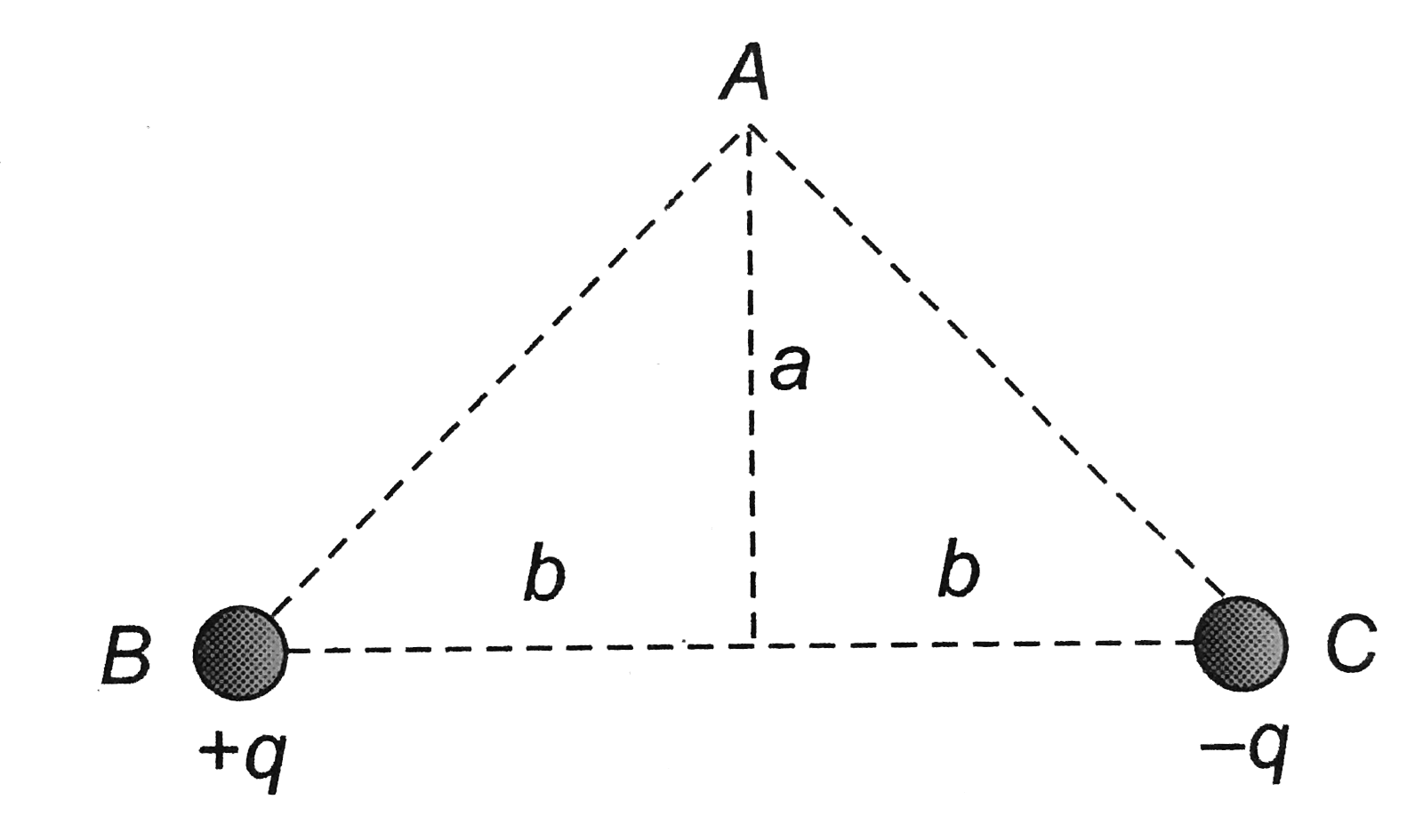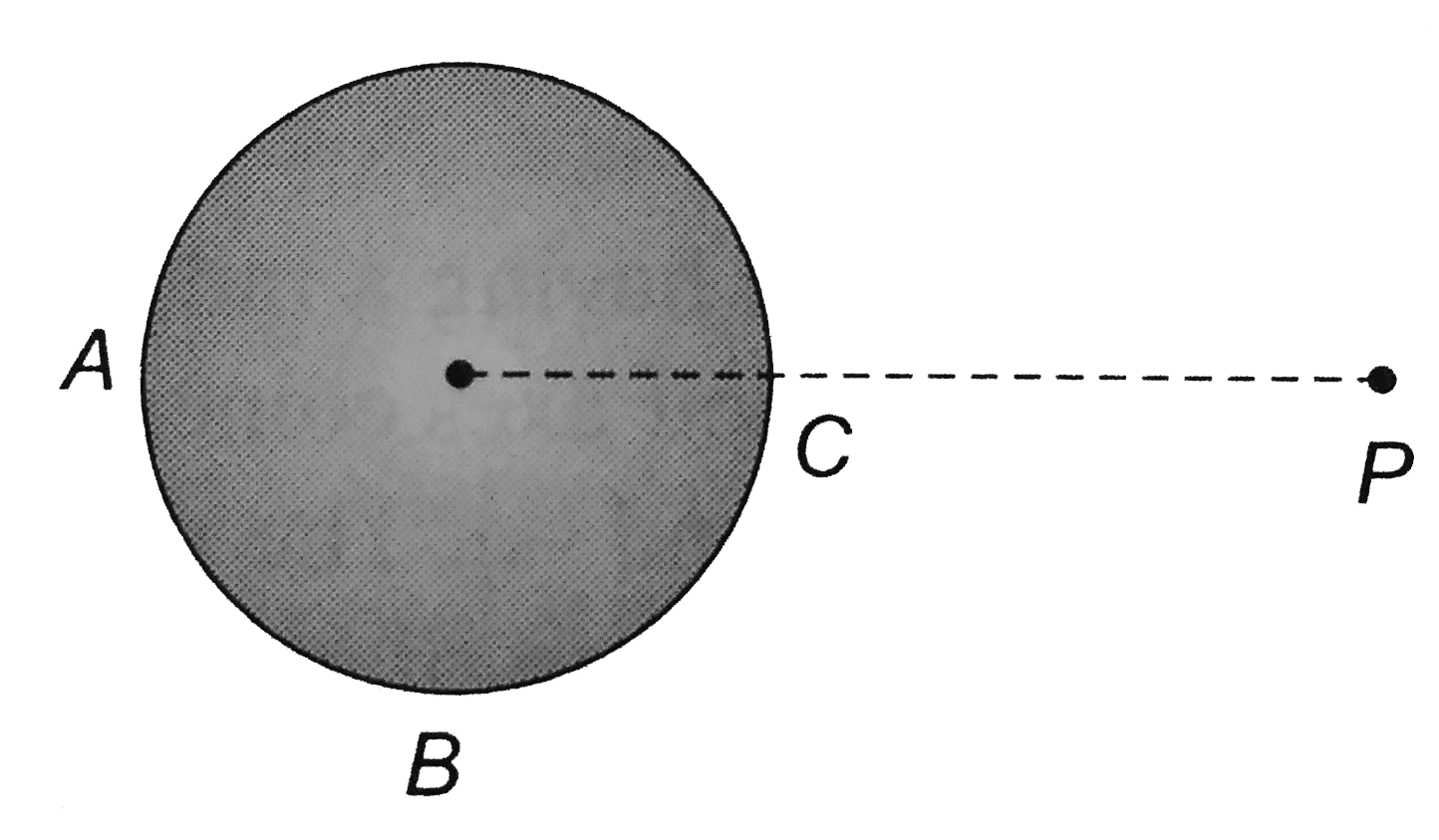Complete Solutions to Electric Potential of chapter ELECTRIC POTENTIAL & CAPACITANCE of Class 12 book with complete answers and questions
| Class 12 | PHYSICS |
| Chapter | ELECTRIC POTENTIAL & CAPACITANCE |
| A2Z | Electric Potential |
| Number Of Questions | 41 |
| Academic Year | 2023-24 |
Inside a hollow charged spherical conductor, the potential
View SolutionThe electric change in unform motion produces
View SolutionThe radii of two metallic spheres `P` and `Q` are `r_(1)` and `r_(2)`, respectively. They are given the same charge. If `r_(1) gt r_(2)` then on connecting them with a thin wire, the charge will flow
View SolutionA hollow metal sphere of radius `5 cm` is charged so that the potential on its surface is `10 V`. The potential at the centre of the sphere is
View SolutionA charge of `10^(-9) C` is placed on each of the `64` identical drops of radius `2 cm`. They are then combined to from a bigger drop. Find its potential
View Solution`125` identical drops each charged to the same potential of `50` volts are combined to from a single drop. The potential of the new drop will be
View SolutionCharges of `+(10)/(3) xx 10^(-9) C` are placed at each of the four corners of a square of side `8 cm`. The potential at the intersection of the diagonals is
View SolutionThree charges `2q, -q, and -q` are located at the vertices of an equilateral triangle. At the center of the triangle,
View SolutionThe electric potential at a point on the axis of an electric dipole depends on the distance `r` of the point from the dipole as
View SolutionThe distance between `H^(+)` and `CI^(-)` ions in `HCI` molecule is `1.28 Å`. What will be the potential due to this dipole at a distance of `12 Å` on the axis of dipole ?
View SolutionThe potential at a point due to an electric dipole will be maximum and minimum when the angles between the axis of the dipole and the line joining the point to the dipole are respectively
View SolutionThe value of electric potential at any point due to any electric dipole is
View SolutionIn Millikan's oil drop experiment an oil drop carrying a charge `Q` is held stationary by a potential difference `2400 V` between the plates. To keep a drop of half the radius stationary the potential difference had to be made `600 V`. What is the charge on the second drop ?
View SolutionA charge of `5 C` experiences a force of `5000N` when it is kept in a uniform electric field. What is the potential difference between two points separated by a distance of `1 cm` ?
View SolutionTwo insulated charged conducting spheres of radii `20 cm` and `15 cm` respectively and having an equal charge of `10 C` are connected by a copper wire and then they are separted. Then
View SolutionTwo spheres of radius `a` and `b` respectively are charged and joined by a wire. The ratio of electric field of the spheres is
View SolutionIf a charged spherical conductor of radius `10 cm` has potential `V` at a point distant `5 cm` from its centre, then the potential at a point distant `15 cm` from the centre will be
View SolutionTwo unlike charges of magnitude `q` are separated by a distance `2d`. The potential at a point midway between them is
View SolutionTwo metal spheres of radii `R_(1)` and `R_(2)` are charged to the same potential. The ratio of charges on the spheres is
View SolutionElectric charges of `+ 10 mu C, + 5mu C, - 3mu C` and `+9 mu C` are placed at the corners of a square of side `sqrt(2) m` the potential at the centre of the square is
View SolutionTwo charges of `4 mu C` each are placed at the corners `A` and `B` of an equilaternal triangle of side length `0.2 m` in air. The
electric potential at `C` is `[(1)/(4pi epsilon_(0)) = 9 xx 10^(9) (N-m^(2))/(C^(2))]`
View SolutionThe potential at a point, due to a positive charge of `100 mu C` at a distance of `9 m`, is
View SolutionAs shown in the figure, charges `+q and -q` are placed at the vertices `B` and `C` of an isoscles triangle. The potential at the vertex `A` is

View SolutionThe radius of a soap bubble whose potential is `16 V` is doubled. The new potential of the bubble will be
View SolutionTwo electric charges `12 mu C` and `-6 mu C` are placed `20 cm` apart in air. There will be a point `P` on the line joining these charges and outside the region between them, at which the electric potential is zero. The distance of `P` from `6 mu C` chrage is
View SolutionA cube of a metal is given a positive charge `Q`. For the above system, which of the following statements is true ?
View SolutionA hollow conducting sphere of radius `R` has a charge `(+Q)` on its surface. What is the electric potential within the
sphere at a distance `r = (R )/(3)` from its centre ?
View SolutionA spherical conductor of radius `2 m` is charged to a potential of `120 V`. It is now placed inside another hollow spherical conductor of radius `6 m`. Calculate the potential to which the bigger sphere would be raised
View SolutionTwo spheres `A` and `B` of radius 'a' and 'b' respectively are at same electric potential. The ratio of the surface charge densities of `A` and `B` is
View SolutionPotential at a point x-distance from the centre inside the conducting sphere of radius `R` and charged with charge `Q` is
View SolutionIn an hydrogen atom, the electron revolves around the nucleus in an orbit of radius `0.53 xx 10^(-10) m`. Then the electrical potential produced by the nucleus at the position of the electron is
View SolutionA thin spherical conducting shell of radius R has a charge q. Another charge Q is placed at the centre of the shell. The electrostatic potential at a point P a distance `R/2` from the centre of the shell is
View SolutionA hollow conducting sphere is placed in an electric field produced by a point charge placed at `P` as shown in figure.
Let `V_(A), V_(B), V_(C )` be the potentials at points `A, B and C` respectively. Then

View SolutionThe electric potential at the surface of an atmoic nucleus `(Z = 50)` of radius `9.0 xx 10^(-13) cm` is
View SolutionA sphere of `4 cm` radius is suspended within a hollow sphere of `6 cm` radius. The inner sphere is charged to potential `3` e.s.u. and the outer sphere is earthed. The charge on the inner sphere is
View SolutionThe electric potential inside a conducting sphere
View SolutionThe potential at a distance `R//2` from the centre of a conducting sphere of radius `R` will be
View SolutionThe radius of nucleus of sliver (atomic number `= 47`) is `3.4 xx 10^(-14)m`. The electric potential on the surface of uncleus is `(e = 1.6 xx 10^(-19) C)`
View SolutionPoint charge `q_(1) = 2 mu C` and `q_(2) = - 1mu C` are kept at points `x = 0` and `x = 6` respectively. Electrical potential will be zero at points
View SolutionIn a certain charge distribution, all points having zero potetnial can be joined by a circles `S`. Points inside `S` have positive potential and points outside `S` have negative potential. A positive charg, which is free to move, is placed inside `S`
View SolutionTwo thin wire rings each having radius R are placed at distance d apart with their axes coinciding. The charges on the two are `+Q` and `-Q`. The potential difference between the centre so the two rings is
View Solution
Electric Potential questions and complete solutions for chapter ELECTRIC POTENTIAL & CAPACITANCE of A2Z PHYSICS (HINGLISH) of Class 12
All Exercises from A2Z Class 12 PHYSICS ELECTRIC POTENTIAL & CAPACITANCE
- AIIMS Questions
- AIPMTNEET Questions
- Assertion Reason
- Capacitor
- Capacitor Circuits
- Capacitor With Dielectric
- Electric Potential
- Electric Potential Energy
- Euipotentials
- Grouping Of Capacitors
- Problems Based On Mixed Concepts
- Relation Between Electric Field And Potential
- Section B - Assertion Reasoning
- Section D - Chapter End Test